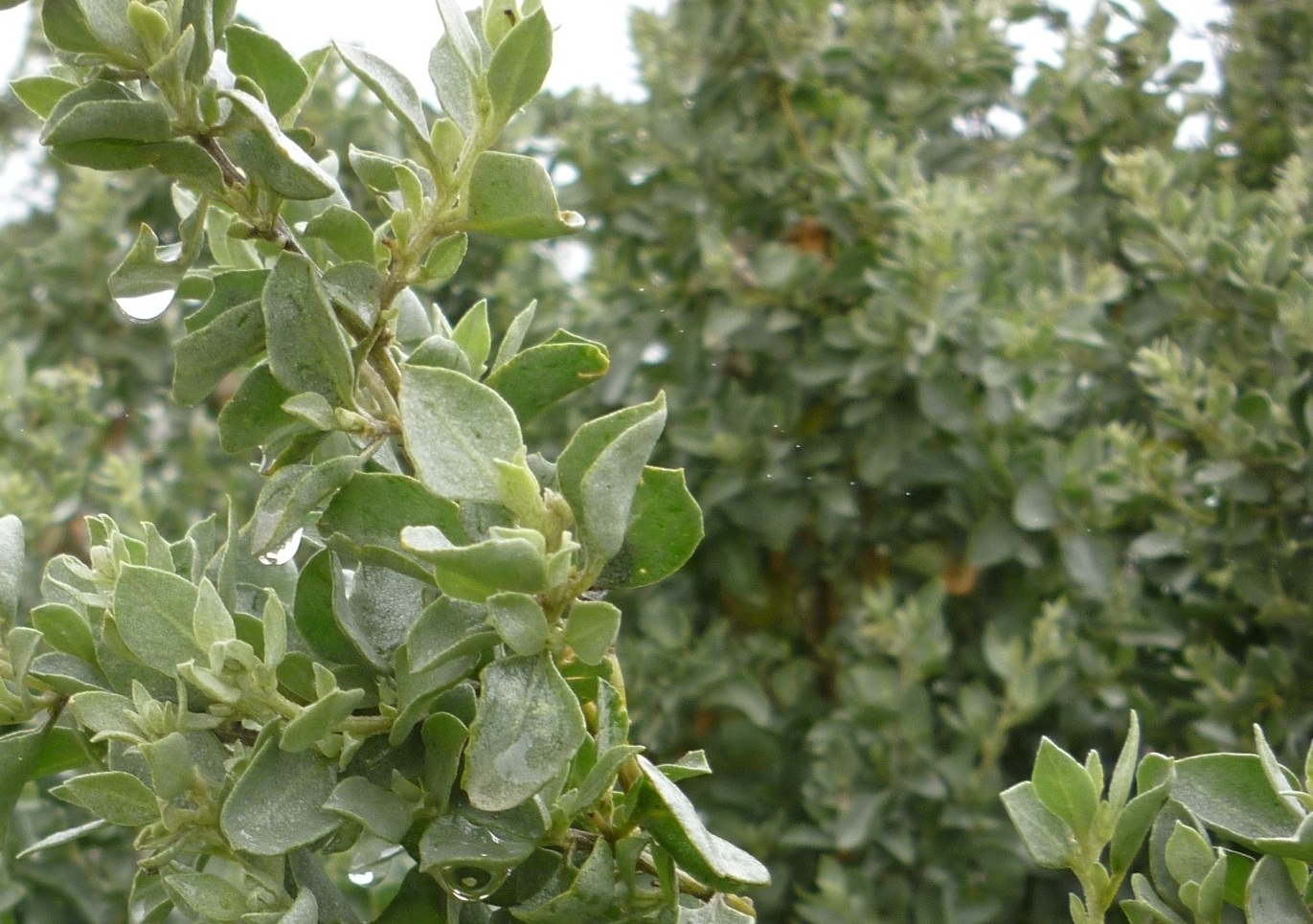The vegetation of the wetlands has changed significantly since European settlement, having evolved in response to changes in the type and frequency of water inundation, land use practices (agriculture and grazing), fire, changing soil characteristics (salinity), water quality (run-off from irrigation and farming practices) and site topography.
Fivebough Wetlands was once a dominant Black box and Lignum ecosystem, in which Cumbungi was extensive around the wetland basin.
Today the species diversity largely consists of the following predominant species:
Black box – Eucalyptus largiflorens
Grey box – Eucalyptus microcarpa
Weeping Myall or Boree – Acacia pendula
River cooba – Acacia stenophylla
Lignum – Muehlenbeckia florulenta
Dillon bush – Nitraria billardierei
Old man saltbush – Atriplex nummularia
Creeping saltbush – Atriplex semibaccata
Nitre goosefoot – Chenopodium nitrariaceum
Ruby saltbush – Enchylaena tomentosa
Lagoon saltbush – Atriplex suberecta
Small saltbush – Atriplex eardleyae
Climbing saltbush – Einadia nutans
Yellow buttons – Chrysocephalum apiculatum
Sida– Sida spp.
Tall copper burr – Sclerolaena convexula
Black roly poly – Sclerolaena muricata
Swamp dock – Rumex brownii
Water couch – Paspalum distichum
Windmill grass – Chloris truncata
Curly windmill grass – Enteropogon ramosus
Blown grass – Agrostis avenacea
Prairie grass – Bromus catharticus
Barnyard grass – Echinochloa crus-galli
Stink grass – Eragrostis cilianensis
Barley grass – Hordeum leporinum
Ryegrass – Lolium perenne
Paspalum – Paspalum dilatatum
Cumbungi – Typha spp.
Common rush – Juncus usitatus
Common spike rush – Eleocharis acuta
Red Azolla/Duckweed – Azolla filiculoides
Dirty dora – Cyperus difformis

